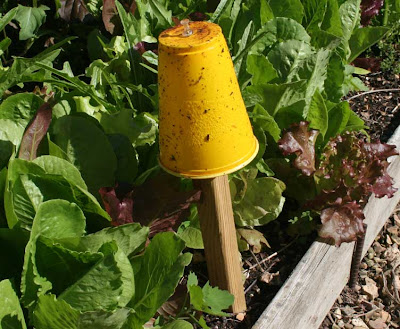 |
| This has been a great cool season for radishes, onions, incredible salad greens, too! |
Ozarks Gardening, May 21, 2011
Jim Long
Advantages to a Cool, Wet Spring
In the soybean and corn growing areas, farmers report they are unable to get their crops in the ground. Normally by this time, corn and soybeans are about 85% planted. Instead, reports are that only about 25% of those crops are in the ground.
Garden centers, nurseries, even Lowes and Home Depot are reporting their sales are down by about 23% over last year. Home gardeners have been discouraged by the wet spring and lack of sunshine. Everyone’s waiting to buy their tomato plants until they can get their garden tillled and ready.
However the producers at farmers markets are doing a brisk business. Last week I found sweet, ripe, locally-grown strawberries at both Kimberling City, MO and Green Forest, AR markets as well as bountiful lettuce and other produce. These producers have waded mud early in the year to get their plants and seed in the ground. Many say they’ve had to harvest in the rain in order to bring their produce to the markets.
The cool, wet spring has given us, in our garden, probably the best crops of radishes we’ve ever had, and for a longer period of time. (Radishes, as you probably know, turn hot and start going to seed as soon as the temperatures rise). Salad greens, too, have produced exceptionally well in the unusually cool weather. We’ve been harvesting several pounds of mixed salad greens several times a week to take to market.
 |
| Yellow sticky traps attract flea beetles and aphids. Add clove oil and they will attract cucumber beetles, too. |
Insect pests have been less obvious than usual. We had fewer problems with cutworms, possibly because they all drowned. Aphids and flea beetles have arrived on tomatoes but biweekly spraying with Ultra-Fine Oil Spray and yellow sticky traps are keeping the pests at a minimum. Certainly when the weather settles and the sunshine decides to remain, plants will shoot upward like bottle rockets, and the garden pests will arrive, ready for dinner, as well.
It’s not too late to plant many crops. Tomatoes and peppers can still be planted for a slightly later crop, when the weather settles. It is too late to plant peas, potatoes, radishes, cabbage, kale and onions, but most other crops can still go in the ground. Annual flowers, shrubs, trees and perennials, also, will do just fine planted late.
Meanwhile, supplement your weekly meals by shopping at your local farmers market. The producers are having a great year with outstanding lettuce varieties. Sweet, crunchy radishes are in good supply, as is kale, bok choy, green and bulbing onions, shallots, spinach, beets and carrots. New peas and baby potatoes will be arriving this week. Visit the weekly farmers markets in Green Forest, Berryville and Eureka Springs, Arkansas. Weekly markets in Kimberling City, Ava, Mountain View, Ozark, and Springfield, MO are all lively. So is the Saturday Evening Market at Reeds Spring. You’ll find excellent produce each week while you are waiting to get your own garden planted.
 |
| Lots of fresh produce, plants and other goodies. |
This and previous Ozarks Garden columns from this newspaper, with photos and links to more information can be found at: ozarksgardening.blogspot.com. If you would like to see what we’re growing in the garden this year at Long Creek Herb Farm, our annual Open House will be Saturday, June 18, 9:00 a.m. to 3:00 p.m. Call 417-779-5450 for directions and to let us know you’re coming (or email us at Longcreekherbs@yahoo.com. Happy gardening!


